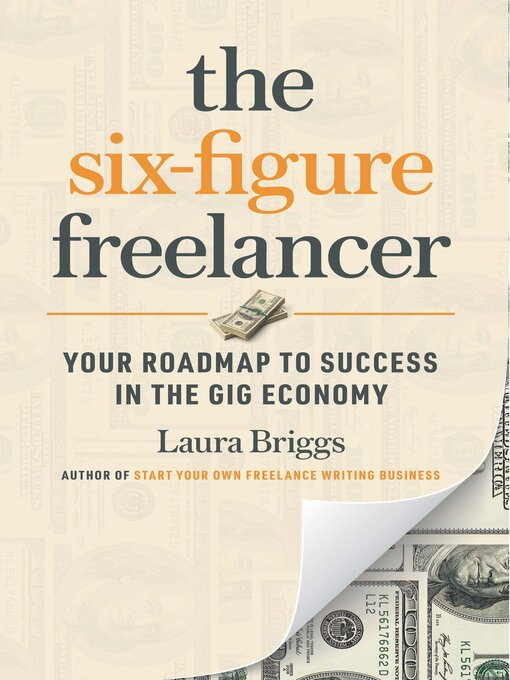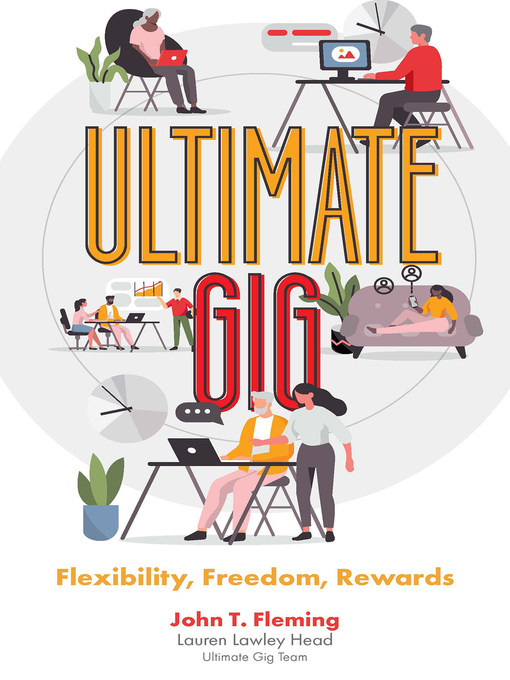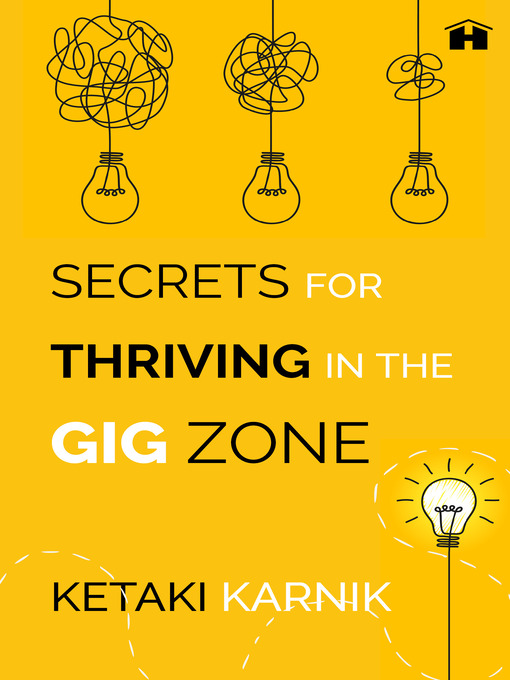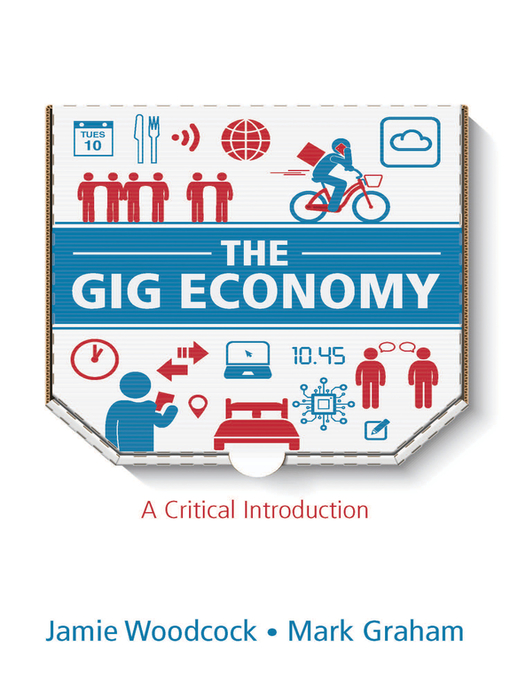Gig Economy
Gig Economy
The gig economy is based on a flexible mode of working that may be temporary or freelance in nature. It often involves connecting with customers through an online platform.
In a gig economy, temporary positions are common, and organisations hire independent workers for short-term commitments.
The term “gig” is a slang word for a job assignment that lasts for a specific period of time. Traditionally, the term was used by musicians to refer to a performance engagement. While temporary work has been in practice all the while, it is the digital platform that has enabled gig workers to take the temporary job to a new level.
Gig workers include those who do freelance work and get paid per task; independent workers who get paid on a contract-to-contract basis; project-based workers; temporary hires who are employed for a fixed period of time; and part-timers who put in less than full-time hours. Gig apps and digital technology are often used to connect customers and gig workers.
In the modern digital world, it is increasingly common for people to work remotely or from home. This trend accelerated during the COVID-19 pandemic. In 2020, the gig economy saw significant expansion as gig workers delivered necessities to home-based customers, and workers who lost their jobs turned to part-time and contract work for income.
Key Takeaways
- The gig economy is based on a flexible mode of work that is temporary.
- The digital platform underpins the gig economy.
- Employers have a wide range of talent to choose from in the gig economy.
- Gig workers have the freedom and flexibility to take on jobs that fit their interests and schedule.
- Consumers in the gig economy enjoy greater convenience and better services.
Benefits of the Gig Economy
The gig economy can result in benefits for businesses, workers and consumers.
For Businesses
In the gig economy, employers usually have access to a wide range of talent they can hire from. If however, the talent proves to be less than favourable, there is no contract that binds employers to continue hiring the workers. Businesses can also save money and resources in the gig economy as they often do not provide workers with office space, equipment or training. A gig model also enables a business to employ experts for specific projects who may be too expensive to hire otherwise. Furthermore, when a situation arises that makes it difficult to attract full-time workers, employers can hire from the gig economy.
For Workers
Gig workers are able to select freelance jobs that fit their interests, provide new opportunities, and a flexible schedule. The freelance economy lets workers choose when they want to work and where they want to work depending on the specific job, resulting in better work-life balance. Workers also have the option to work multiple jobs and ensure that they are not “locked in” or dependent on a single employer.
For Consumers
As the gig economy employs large numbers of people as part-time, temporary or independent workers, goods and services can be delivered more cheaply and with more efficiency. Consumers turn to the gig economy for convenience and better service as with the case of ride-hailing or food-delivery apps. Gig apps also help consumers avail a service that is in short supply or expensive, as for example, the role played by Airbnb in places where hotel rooms may be in short supply or offering temporary accommodations at lower prices.
Downsides of the Gig Economy
The gig economy trend can affect the work culture in organisations with the frequent entry and exit of temporary workers. It may be difficult to maintain consistent relationships among workers, employers and clients on a long-term basis. Full-time employees may also find it more challenging to develop in their careers since temporary employees are often cheaper to hire and more flexible in their availability.
For gig economy workers, the lack of financial stability and uncertainty about the availability of paid work are key challenges. This is especially so for those who struggle to make ends meet or find it difficult to pay (or even secure) mortgages and loans. Gig workers do not also enjoy benefits they would get working as full-time employees. They are typically not eligible for paid leave, health insurance, holiday benefits or pensions.
For some workers, the flexibility of doing gig jobs can may very well disrupt their work-life balance, sleep patterns, or daily routines. Workers may also be required to make themselves available at any time when gigs come up, regardless of their schedule. As gig jobs become more competitive, workers must always be on the look out for the next gig. There is also the danger that inexperienced workers can take on too many gigs, leading to overwork and burnout.
References
1. “Gig Economy,” Investopedia, 31 March 2022. https://www.investopedia.com/terms/g/gig-economy.asp
2. Ben Lutkevich, “Gig economy,” Tech Target, February 2022. https://www.techtarget.com/whatis/definition/gig-economy
3. Patrik Hedlund, “What is the gig economy and how will it change the future of work?”, Ericsson, 1 February 2022. https://www.ericsson.com/en/blog/2022/2/gig-economy-what-is-it
Further Reading
Learn more about the dynamics of the gig economy and how it is revolutionising the workforce.
Websites
What is the Gig Economy and What's the Deal for Gig Workers?
Independence and flexibility are cited as the main reasons for people to work in the gig economy. Gig workers, are however, less satisfied with work-related benefits and the level of income. As the gig market grows, the challenge for policy-makers and officials is to balance the innovation that creates jobs against the need to ensure that companies are offering workers a fair deal.
Emma Charlton, “What is the Gig Economy and What’s the Deal for Gig Workers?” World Economic Forum, 26 May 2021. https://www.weforum.org/agenda/2021/05/what-gig-economy-workers/
The State of Gig Work in 2021
According to a Pew Internet survey, among current or recent gig workers, more report that work is something they do on the side rather than as their primary means of earning a living. However, a smaller but, notable segment have incorporated gig jobs more fully into their work life – 31 percent of current or recent gig workers say this has been their main job over the past 12 months.
Monica Anderson, Colleen McClain, Michelle Faverio & Risa Gelles-Watnick, “The State of Gig Work in 2021,” Pew Research Center, 8 December 2021. https://www.pewresearch.org/internet/2021/12/08/the-state-of-gig-work-in-2021/
Making It Work: Understanding the Gig Economy’s Shortcomings and Opportunities
One of the main tensions in the gig economy is the issue of empowering and protecting workers while ensuring business growth and innovation. A number of regulatory responses have viewed this tension as a zero-sum game, resulting in mixed consequences for workers. Fresh solutions are called for to harness the developmental potential of digital labour platforms and to empower and protect workers.
Peichin Tay & Oliver Large, “Making It Work: Understanding the Gig Economy’s Shortcomings and Opportunities,”Tony Blair Institute for Global Change, 12 April 2022. https://www.institute.global/insights/tech-and-digitalisation/making-it-work-understanding-gig-economys-shortcomings-and-opportunities
The Gig Economy: Current Issues, the Debate, and the New Avenues of Research
While research on gig economy proliferates, the distinction between “platform” and “gig” economy frequently remains blurred in the analysis. This paper elaborates on this issue, and suggests that the discussion on gig economy is largely dispersed and that a clearer research agenda is needed to streamline the discussion to improve its exploratory and explanatory potential.
Radoslaw Malik, Anna Visviz & Malgorzata Skrzek-Lubasinska, “The Gig Economy: Current Issues, the Debate, and the New Avenues of Research,” Sustainability, 13, iss. 9 (April 2021). https://www.mdpi.com/2071-1050/13/9/5023
From Crafting What You Do to Building Resilience for Career Commitment in the Gig Economy
This study investigates how individual and collaborative job crafting may help digital labourers to build resilience and career commitment in the gig economy. It was found that those who engaged in higher individual job crafting reported subsequently higher resilience at the outset. Moreover, high collaborative job crafting compensated for low individual crafting efforts in reaching higher resilience and subsequently higher career commitment in the gig economy.
Sut I. Wong, Dominique Kost & Christian Fieseler, “From Crafting What You Do to Building Resilience for Career Commitment in the Gig Economy,” Human Resource Management Journal, 31 (February 2021). https://onlinelibrary.wiley.com/doi/pdfdirect/10.1111/1748-8583.12342
Re-Thinking Gig Economy in Conventional Workforce Post-COVID-19: A Blended Approach for Upholding Fair Balance
This paper looks at how a blended workforce model might work in the post-COVID era, with a homogenous workforce becoming a heterogenous workforce of full-time employees working in tandem with gig talents connected via digital platforms. It proposes a framework that can play a crucial role in creating new job opportunities and boosting employee morale, while minimising costs and increasing productivity.
Manjari Mahato, Nitish Kumar & Lalatendu Kesari Jena, “Re-Thinking Gig Economy in Conventional Workforce Post-COVID-19: A Blended Approach for Upholding Fair Balance,” Journal of Work-Applied Management, 13, iss. 2 (21 September 2021). https://www.emerald.com/insight/content/doi/10.1108/JWAM-05-2021-0037/full/html
Journal Articles
Sceptics or Supporters? Consumers' Views of Work in the Gig Economy
Drawing on Australian public opinion data, this study looks at consumers’ views of the gig economy and explores whether these will help or hinder pro-worker campaigns. While consumers are sympathetic to gig workers’ financial plight, they also see benefits in the work’s flexibility and opportunities for jobseekers.
Joshua Healy, Andreas Pekarek & Ariadne, Vromen, “Sceptics or Supporters? Consumers’ Views of Work in the Gig Economy,” New Technology, Work & Employment, 35, iss.1 (March 2020): 1-19. (From Ebscohost Business Source via NLB’s e-Resources website)
Uber Happy? Work and Well-Being in the 'Gig Economy’
Using administrative data from Uber and a representative survey of London drivers, this paper explores their backgrounds, earnings and subjective wellbeing. While Uber drivers remain at the lower end of the London income distribution, they report higher levels of life satisfaction than other workers. The paper hypothesises that their higher life satisfaction reflects their preferences for flexibility and the autonomy that the gig platform offers.
Thor Berger, Carl Benedikt Frey, Guy Levin & Santosh Rao Danda, “Uber Happy? Work and Well-Being in the ‘Gig Economy’,” Economic Policy, 34, iss 99 (July 2019): 429-477. (From Ebscohost Business Source via NLB’s e-Resources website)
The Future of Hospitality Jobs: The Rise of the Gig Worker
In the wake of the COVID-19 pandemic, many permanent hospitality jobs might be lost to gig workers. Governments and employers have to prepare and adapt to a future where the desire for flexibility is central. This article reviews the many advantages and disadvantages of the gig economy and offers an insight into the future of hospitality jobs.
Georges El Hajal & Bill Rowson, “The Future of Hospitality Jobs: The Rise of the Gig Worker,” Research in Hospitality Management, 11, iss 3 (December 2021): 185-190. (From ProQuest Central via NLB’s e-Resources website)
Identity in the Gig Economy: Affect and Agency
This paper highlights the importance of individual work identity in the new world of gig work and proposes a theoretical model on worker agency and gig worker identity construction. It suggests that individual work identity perceptions can be generated by negotiated exchanges with organisations, groups and networks that may serve as organisational proxies.
Joy H. Karriker, Nathan S. Hartman, Flavia Cavazotte & W. Lee Grubb, “Identity in the Gig Economy: Affect and Agency,” Journal of Organizational Psychology, 21 iss. 2 (2021): 146-159. (From ProQuest Central via NLB’s e-Resources website)
E-Books
Retrieved from OverDrive. (myLibrary ID is required to access the eBook)
| Title | Description |
 |
This book offers practical tips and strategies for the freelancer to develop customer relationships; effective methods for structuring the workday so that the work from home schedule generates an efficient income; and smart ideas to raise rates while holding on to clients to make sure the freelancer’s efforts are compensated. Laura Pennington Briggs, The Six-Figure Freelancer : Your Roadmap to Success in the Gig Economy (LaVergne : Entrepreneur Press, 2020). |
 |
The gig economy has been the fuel that has helped companies realise new and better ways to engage manpower and serve consumers. This book suggests that gig opportunities will continue to grow as a meaningful way to earn income. It argues that the gig economy is helping to define a new reality, and that flexibility and freedom in how work is done can be a success. Laura Pennington Briggs, John T. Flemming, Ultimate Gig: Flexibility, Freedom, Rewards (Bingley: Emerald Publishing Limited, 2021). |
 |
This book holds that the rules of a full-time job do not apply any longer. Thriving in the gig world is not merely about getting the skill-set right. Gig workers will have to reinvent themselves. Four complementary dimensions need to be mastered: gig attitude, gig lifestyle, gig personality, and gig functional skills. The book offers practical hacks to thrive in the booming gig world of work. Ketaki Karnik, Secrets for Thriving in the Gig Zone (New York: Hay House India, 2021). |
 |
This work sheds light on how the gig economy came to be, how it works, and what it is like to work in it. It shows that although the gig economy has facilitated innovative new services and created jobs for millions, it is not without its cost. This is not, however, an argument for turning back the clock. Instead, it outlines several strategies that can produce a fairer platform economy that can work for everyone. Jamie Woodcock, The Gig Economy: A Critical Introduction (New York: Polity, 2020). |
Videos
Singapore's gig workers to get better job protections from 2024, including in CPF and injury compensation
This video highlights that gig workers previously did not have the benefits that traditional employees enjoy, such as healthcare and financial protection, but will have legislation to provide for these from 2024.
Singapore’s gig workers to get better job protections from 2024, including in CPF and injury compensation Channel News Asia Video: 3:47, 2 May 2021. https://www.channelnewsasia.com/watch/singapores-gig-workers-get-better-job-protections-2024-including-cpf-and-injury-compensation-video-3096151
What is the Gig Economy?
Gig economy jobs are becoming increasingly popular and essential as technology progresses. This video looks at what exactly the gig economy is and offers a step-by step guide for workers to be a part of it.
N26, “What is the Gig economy?” YouTube video: 3:06, 9 July 2021. https://www.youtube.com/watch?v=AXYlnyCUETU
All Rights Reserved. National Library Board Singapore 2022.

